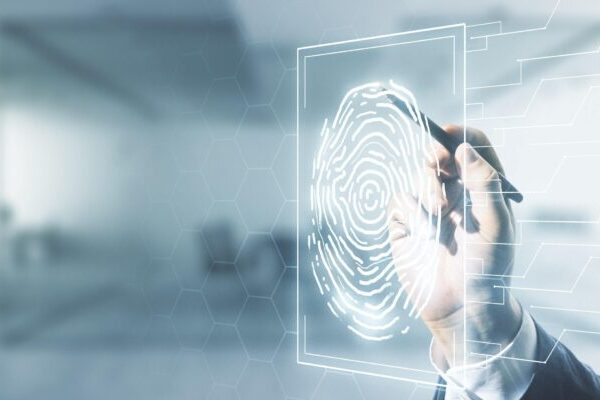Biometrics have ushered in a new era of identity verification. But is the trade-off between security and privacy worth it?

Your unique fingerprint, the distance between your facial features, and the size of your gait — these are all things employers can currently use to verify your identity. Once a novel technology reserved for sci-fi movies and law enforcement, biometric technology has fast become a staple of our personal and professional lives, and its use is showing no signs of slowing down.
But while the some businesses view biometrics as a convenient and cost-effective security solution, many employees don’t see it in the same light. Concerns around employee privacy and data security have led to a barrage of court cases being brought against the practice which in many cases, have resulted in federal laws around its use.
To help employers better understand this trade-off between privacy and security, we spoke to businesses currently using the technology (as well as some that have recently ditched it), to understand the ethical, practical, and legal implications of using biometrics in the workplace.
The Rise of Employee Biometrics
Biometric verification, or biometric authentication, is a security process where unique biological characteristics, like fingerprints, hand, face, and retina scans, or voice patterns are used to identify an individual. Using mathematical algorithms to map out the physical and behavioral characteristics, the method is evolving every year and is currently understood to be 99.8% foolproof.
In a corporate setting, employee biometrics can be used for a range of different purposes, from identifying personnel and monitoring when they pass through checkpoints, to recording when they log in and out of internal systems.
And the practice is catching on. While historically biometrics was predominantly used by governmental and financial institutions, data from PwC suggests that 57% of US businesses are currently using the authentication method in some way or another. This equates to over 18 million businesses across the country.
With so many businesses welcoming biometric solutions into their workplace, it’s clear the practice is delivering results. To understand the main motivations behind its use, we spoke to employers up and down the country. Here’s what we found.
The Most Accurate Verification Method

Unsurprisingly, when discussing the benefits of using employee biometrics, the method’s high level of accuracy came up the most.
By digitizing core processes, businesses using the method are able to do away with clunky passwords and manual devices like punch cards and timestamps. Aside from improving convenience for employers and employees, this is typically able to generate much more accurate results.
According to Luke Fitzpatrick, Marketing Officer of Drsoso.com, this level of accuracy is especially useful when it comes to tackling ‘time theft’ — a phenomenon where employees get paid for the time they didn’t work, and ‘buddy punching’ — a similar type of fraud that involves staffers clocking in on behalf of absent employees.
“(Biometrics) cannot be manipulated like other systems where an employee can punch in or out on behalf of others”, Fitzpatrick tells Tech.co. Edward Mellet, Director at WikiJob agrees, explaining that fingerprint scans can be used to tackle wage theft, as well as to “refute an employee’s claim that an employer’s time records are erroneous”.
These concerns are valid. In the US, nearly half of employees have admitted to taking part in time theft at some point or another. Research from QuickBooks also reveals this can cost businesses an estimated $11 billion a year, with buddy punching contributing a further $372 million of losses.
By recording attendance and tracking time through biometric devices, staffers are unable to cheat the system or clock in on each other’s behalf. This is by far the most effective way to improve employee accountability while avoiding unnecessarily haemorrhaging money through lost labor.
Enhanced levels of accuracy have massive implications for security too, as tech expert and Forbes Council Member, Ana Codallo, points out.
”Because your password is your physical identity, it never changes. There are no mistakes or malfunctions… it’s much more secure and efficient”. – Ana Codallo, Forbes Council Member
And businesses are in agreement. Following in the footsteps of major tech firms Apple and Microsoft, a number of businesses we spoke to have adopted biometric verification to overcome vulnerabilities associated with passwords. For instance, Abdul Savoor, Full Stack Developer at The Stock Dork explained that while passwords used to be the norm, “they are becoming increasingly hackable every day”, paving the way for more secure, high-tech solutions.
“Unlike passwords, biometric technology offers a variety of solutions that are really hard to hack. This is a tremendous aid for us, particularly for business owners who have been battling security issues for a long time.” – Abdul Savoor, Full Stack Developer at The Stock Dork
This belief is also held by Scott Annam, founder of MyCube, who explains that as instances of cybercrime have increased over the years, biometric tech has only improved the security of his safes while providing him with the added comfort of knowing his safe is programmed specifically to the owner.


